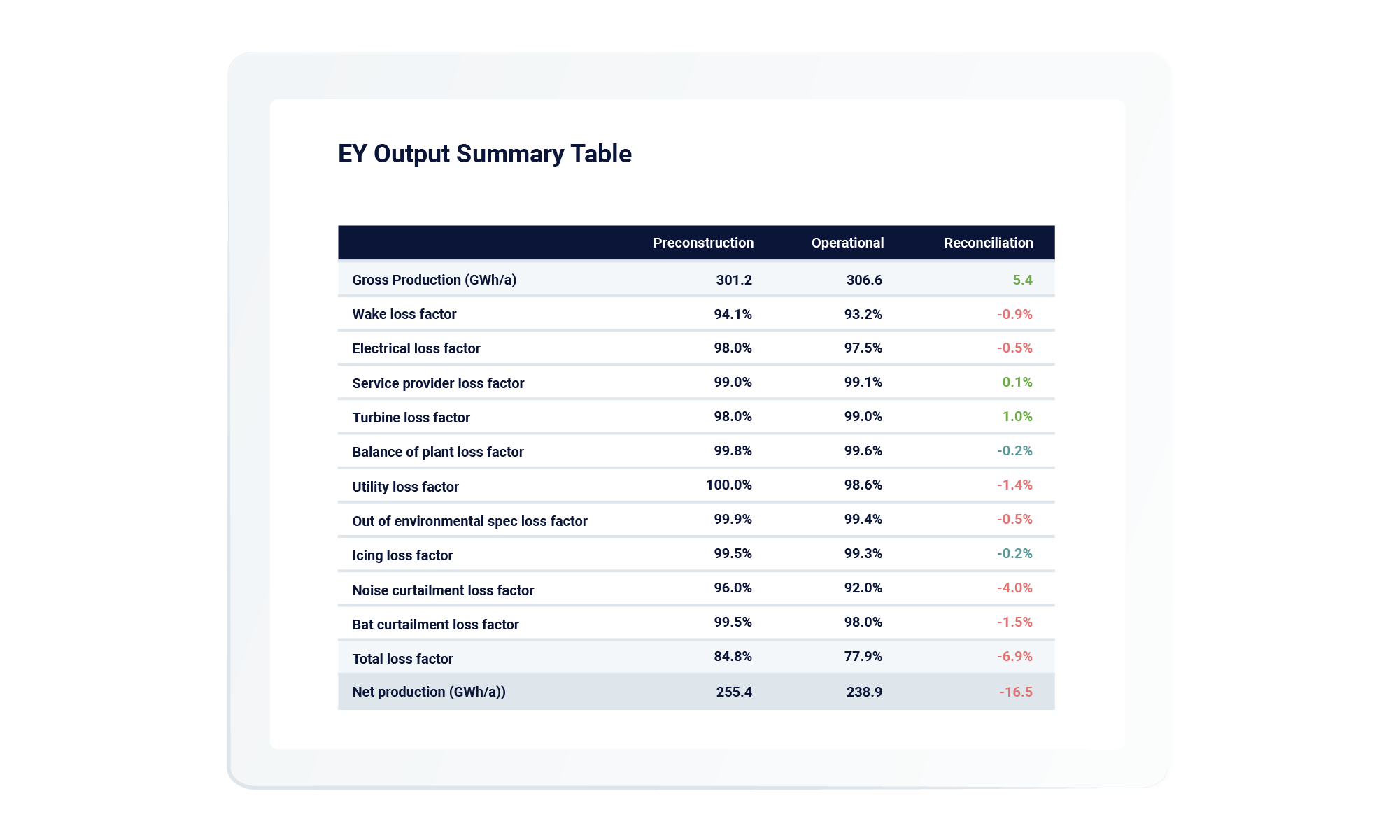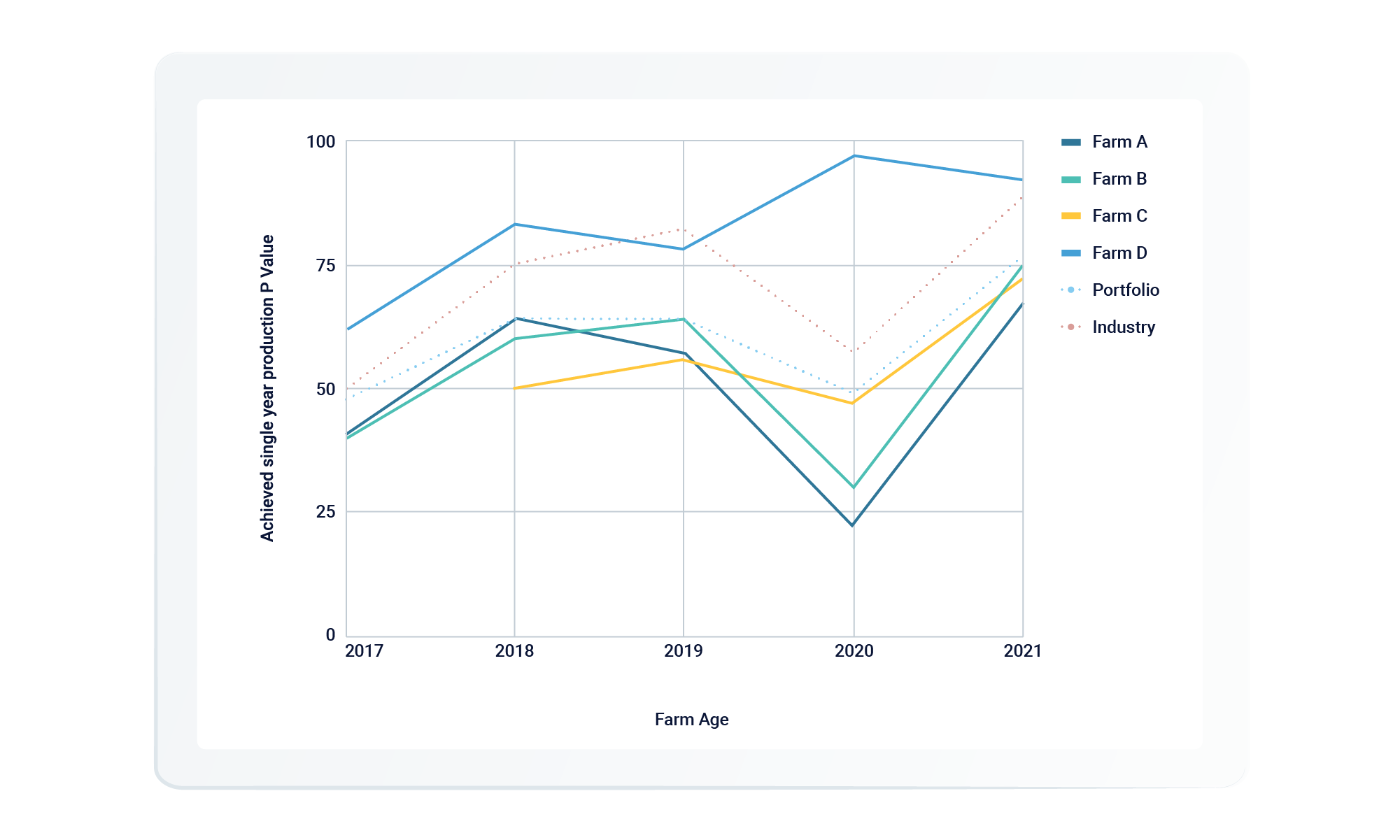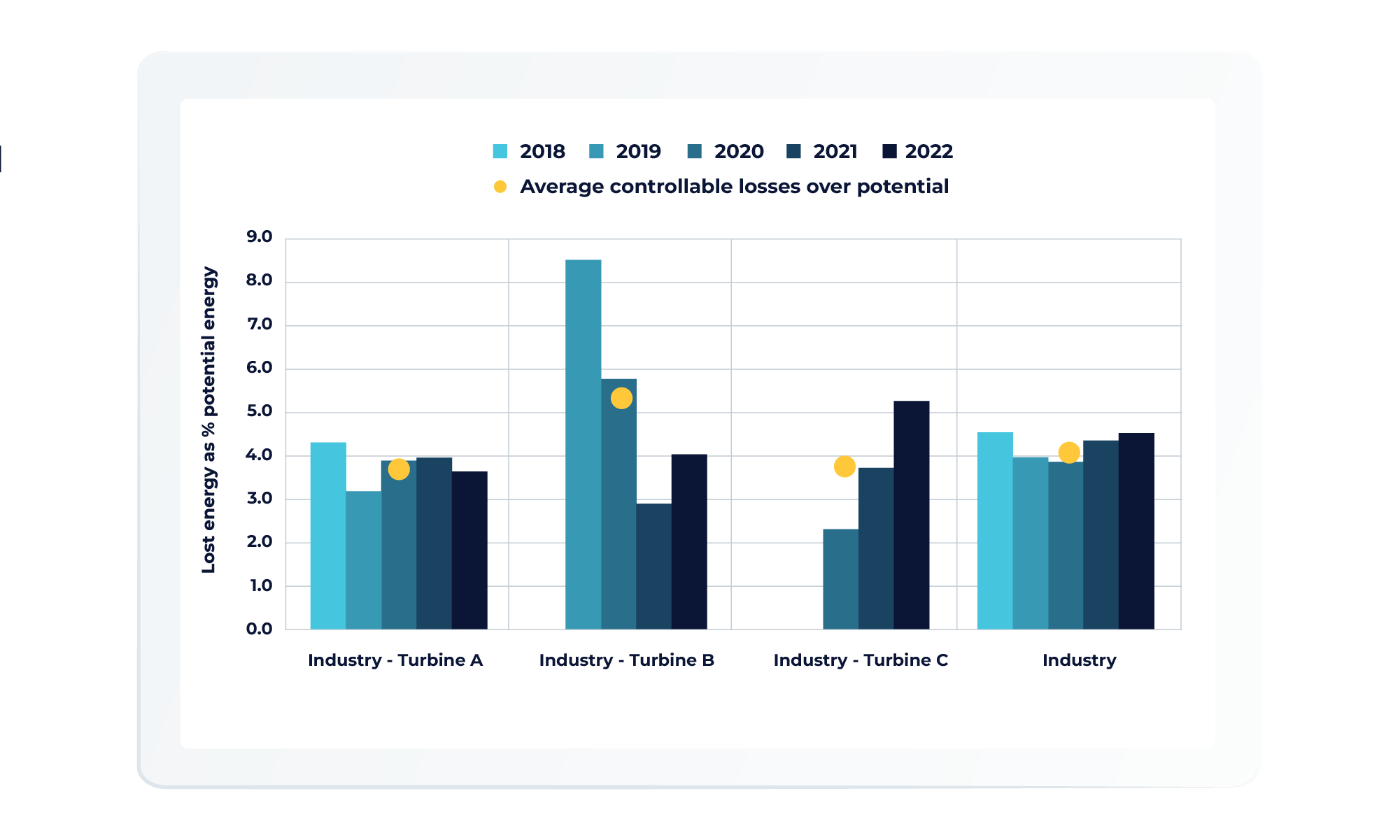
Operational energy yield assessments
Clir’s operational wind and solar energy yield assessments are augmented by our global industry dataset, enabling robust and defensible assumptions, improved p-values, and increased confidence in financial model inputs.
Improved loss modelling
Benchmarked loss assumptions
Modelled performance of optimizations and upgrades
Industry-leading energy yield methodology
Leveraging automated data organization, categorization and enrichment, along with expert oversight, Clir reduces uncertainty on energy yield results by using machine learning to calculate all potential scenarios. Results are aligned with energy yield best practices and farm-specific considerations to determine which scenario accurately represents the farm’s future production.
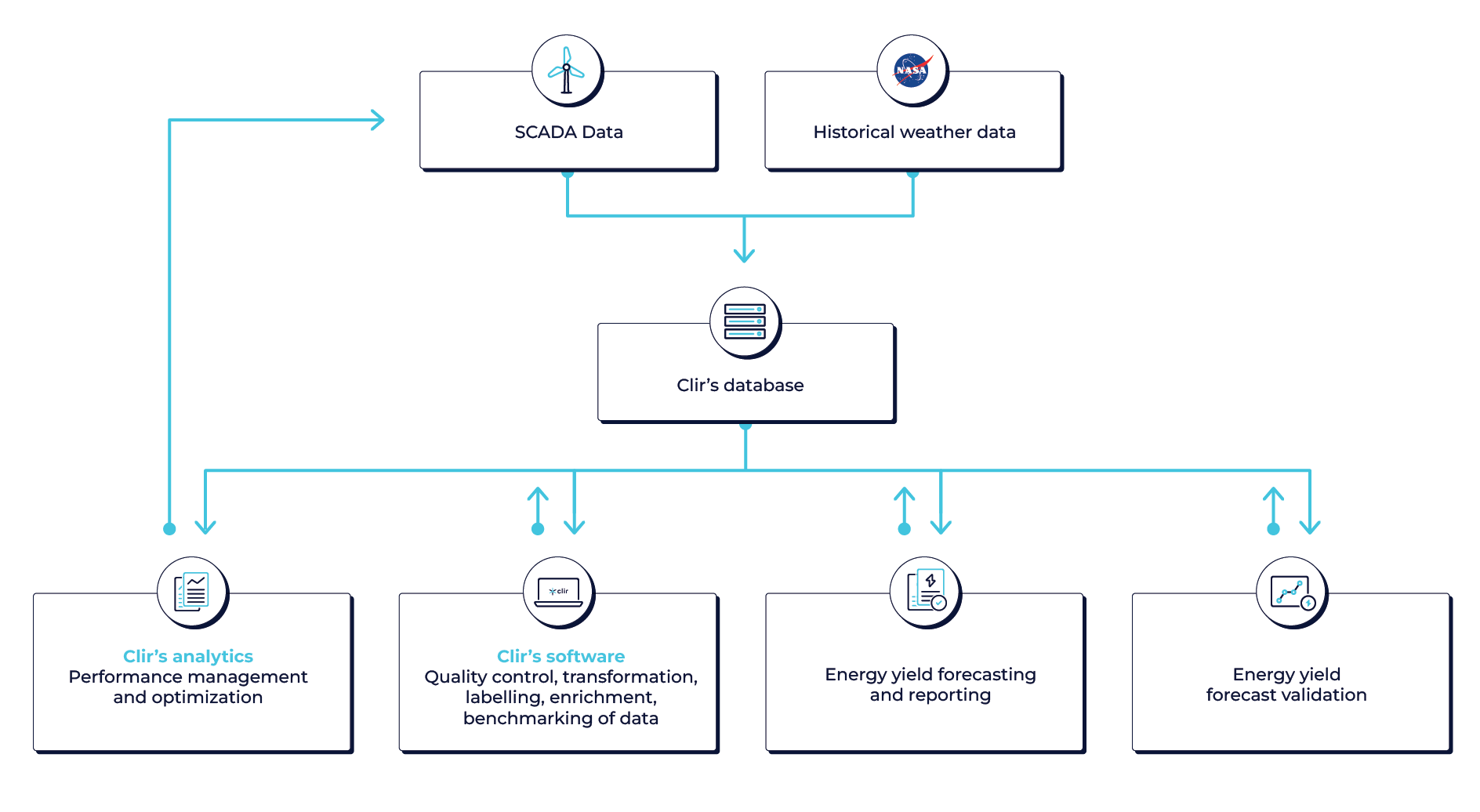
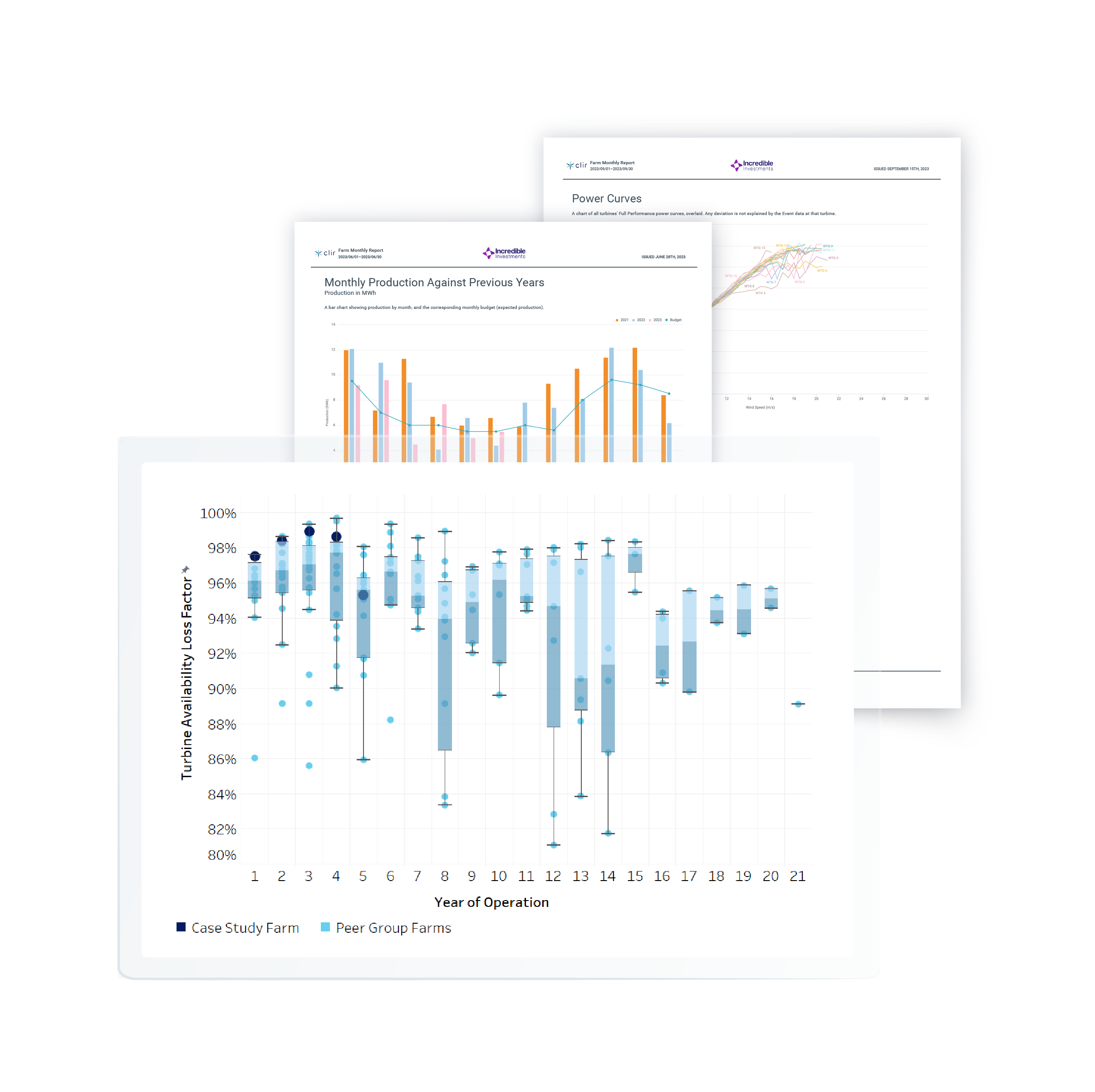
Improved loss factor assumptions
Due to a lack of available data, the industry often uses blanket, standard assumptions for technology loss factors and availability. This leads to inaccurate energy yield assessments and assets underperforming compared to predictions. Clir uses enriched industry data from technology performance, SCADA and monthly reports, alongside farm-specific data, for more accurate assessments. This improves confidence in the P50 and P90, offering evidence to persuade independent engineers to upgrade p-values.
Benchmarked loss factors
Global project data allows Clir to form peer groups — based on region, turbine technology, service provider, asset manager and more — to compare and understand wind and solar farm loss factors. Clients can see how their farm is performing compared to peers, and understand and rectify the losses that are impacting farm performance. This enables more robust energy yield assessments and the identification of high loss categories with potential for improvement.
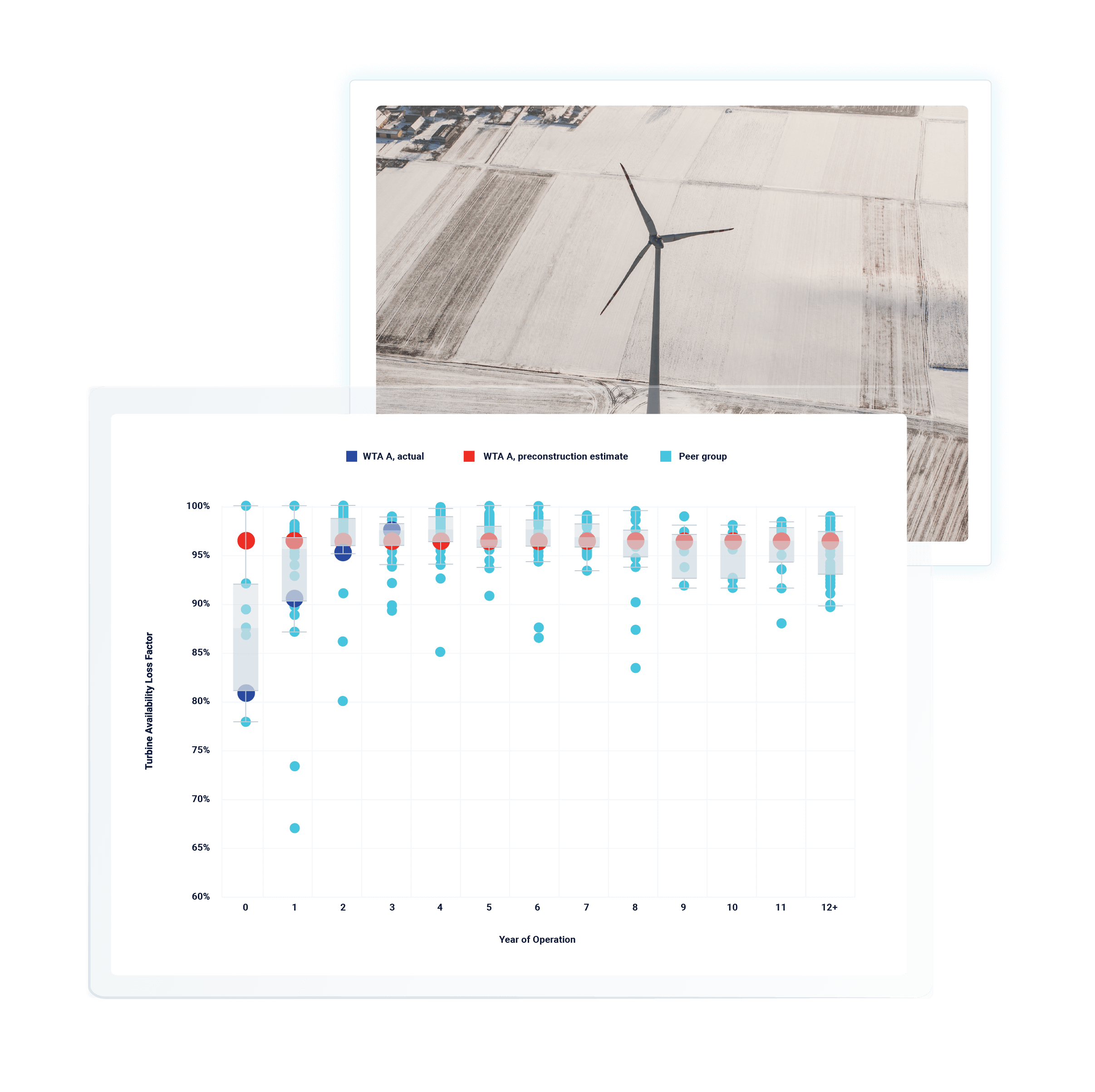
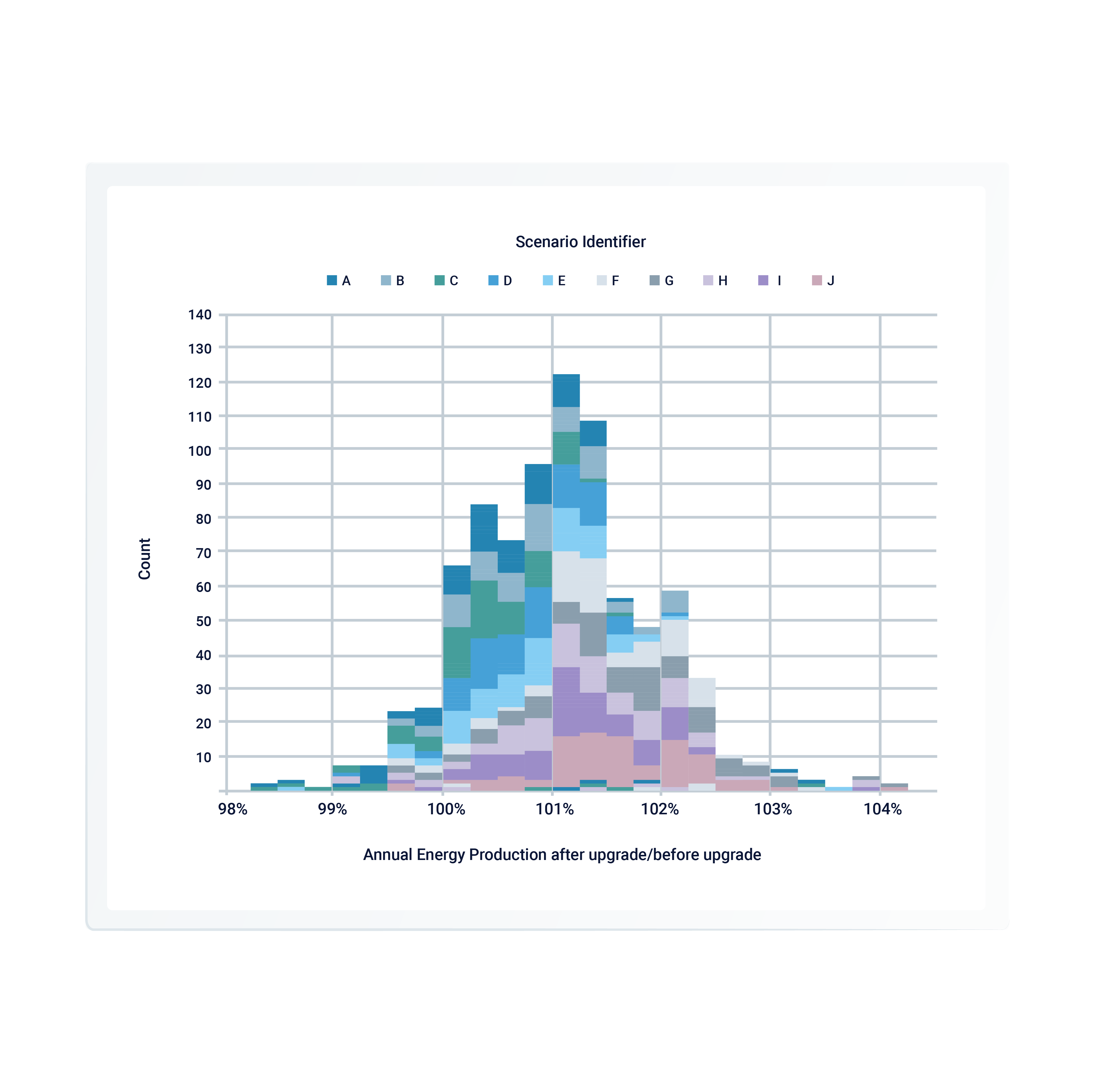
Modelling future performance
Clir develops optimization roadmaps for clients using farm data, industry insights and best practices. This includes data on the performance of available upgrades. By modelling the impact of optimizations or upgrades on future energy production, clients can quantify the impact of these changes on energy yield metrics. Implementation of optimizations and upgrades can be prioritized by what generates the biggest performance impact.
Leverage Clir’s energy yield assessments for
